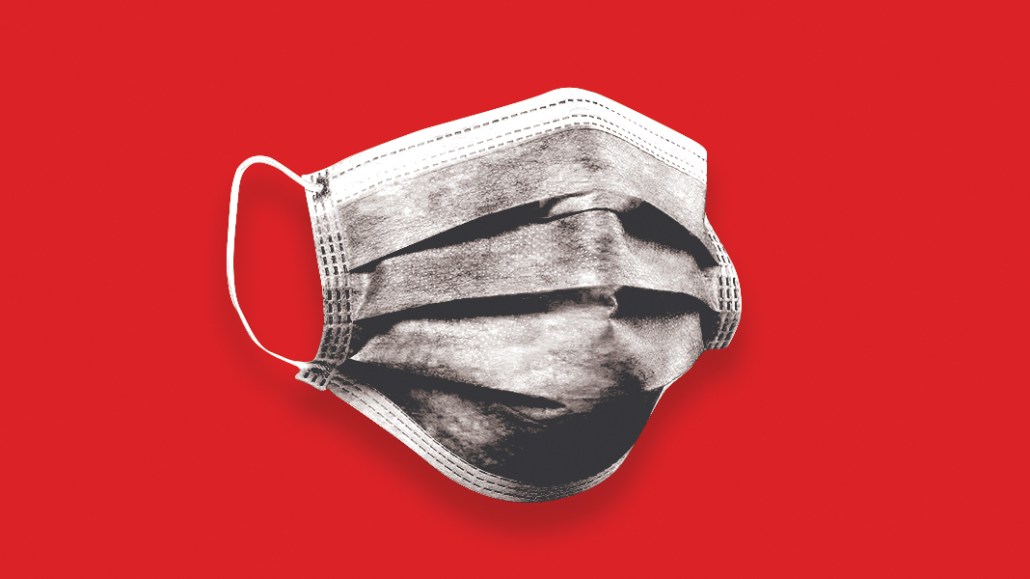‘People are gonna shop’: Despite second coronavirus wave, consumer confidence ticks up and brakes on ad spend not slammed yet

After months of ominous predictions, the second coronavirus wave is now rising over the United States, with hospital beds filling up, school systems closing, cities and states imposing new lockdown and safety measures and people bracing for another stretch of isolation.
But advertisers — so far, at least — have kept up their spending, according to the chief revenue executives of five different media companies.
Unlike this spring, when programmatic ad spending plunged 30% literally overnight, one in four advertisers paused their spending and some predicted that the pandemic would cause more economic damage than the 2008 financial crisis, most advertisers, as they head into the end of fourth quarter, are continuing to spend, albeit in the shorter spurts that have come to define media ad spending in 2020.
To be sure, the advertising industry is nowhere close to where it was before coronavirus, and signs that the pandemic has inflicted long-term damage to the economy, and, consequently, the advertising industry, are growing. Both buy- and sell-side sources remain wary of things worsening, and none are willing to bet on whether the stability that’s marked much of the year’s second half will persist into next year.
But some key differences between the spring and this late fall are helping to keep business moving. And grim resignation about the virus’s staying power is one of them.
“With the numbers we’re seeing around this huge surge, you’d expect people to say, turn it off, or cut my ads,” said one CRO, who asked not to be named. “But there was this interesting notion, six months ago, about a snap back to normal. That’s gone. There are more marketing dollars around [this time] because they think it can’t wait.”
So far, the shutdown has not created the supply chain havoc that caused so many problems during the spring. Brands and retailers in numerous sectors have spent the summer preparing for the prospect of a second wave, moving away from lean supply chains and beginning to stock up on items months earlier than usual.
Brands also have a clearer sense of what kind of messaging will be appropriate if things worsen. While the first wave plunged the country into a period of fear and uncertainty, consumers and brands both know what they are up against this time, a second CRO said.
“It’s gonna be a combination of general-purpose, very positive and uplifting messaging,” that CRO said.
Shorter spending plays a role too. With many advertisers now spending just weeks out, there are fewer long-term commitments that need to be tabled or adjusted.
Two other sources pointed to the recent lean stretch everybody went through this year, where numerous publishers grudgingly allowed advertisers to pause or cancel deals, sometimes just days before campaigns are supposed to go live. That flexibility, and the trust it created, is playing a role this time.
“If we have a full repeat of what we had, they know that we’ll be good partners,” said Stefanie Rapp, the chief revenue officer of Bleacher Report. “They have confidence in us to move forward together, tactfully and with the right tone.”
Ultimately, the biggest determining factor could be the resilience of the consumer mindset. After taking a plunge in the spring, consumer confidence has been ticking steadily upward since July, according to figures from Organization for Economic Co-operation and Development.
“Consumerism is something that’s very difficult to shut down,” said John Donahue, the cofounder of the programmatic agency WLxJS. “People are gonna shop.”
More in Media

From sidelines to spotlight: Esports events are putting creators center stage
Esports events’ embrace of content creators reflects advertisers’ changing priorities across both gaming and the wider culture. In the past, marketers viewed esports as one of the best ways to reach gamers. In 2025, brands are instead prioritizing creators in their outreach to audiences across demographics and interest areas, including gaming.

Condé Nast and Hearst strike Amazon AI licensing deals for Rufus
Condé Nast and Hearst have joined the New York Times in signing a licensing deal with Amazon for its AI-powered shopping assistant Rufus.

Media Briefing: AI payouts may be entering a new era
AI compensation is evolving — and new models, not just publisher demands, are driving the shift beyond flat-fee licensing.





